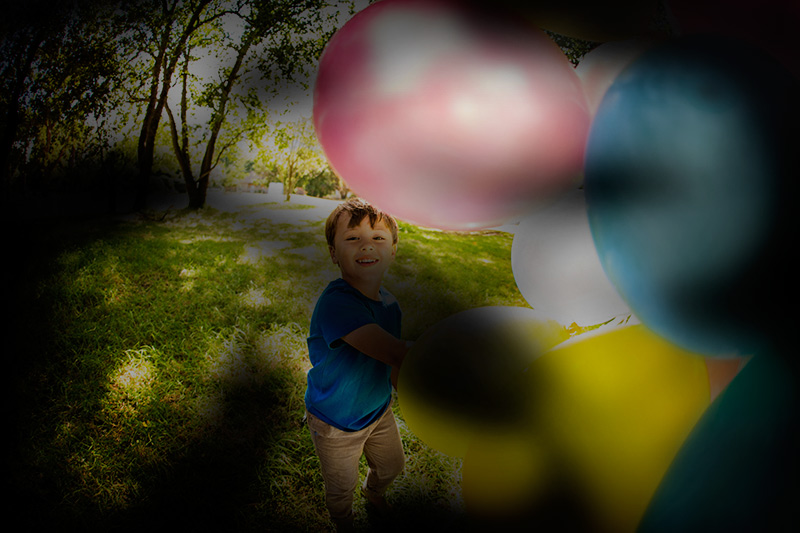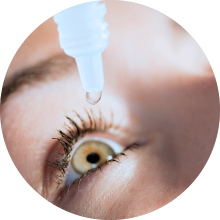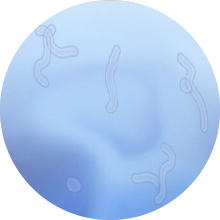Vision problems are likely to affect everyone at some point or another. The most common are refractive errors, otherwise known as short- or longsightedness, astigmatism and presbyopia (which affects everyone in some way after the age of around 40).
Other vision problems and conditions are more serious and can have a greater impact on our quality of life. Regular eye examinations with an optometrist are essential to combat potential issues and help maintain good vision for life.
Common symptoms
Many eye diseases have no early symptoms.
They may be painless, and you may see no change in your vision until the condition has become quite progressed. The single best way to protect your vision is through regular eye examinations.
There are some symptoms and eye changes however that may indicate something is wrong. If you experience any of the following, schedule an appointment with your optometrist immediately.
- Loss of vision
- Blurred, hazy or double vision
- Severe, sudden or recurrent eye pain
- Seeing flashes of light or sudden dark floating spots
- Unusual or painful sensitivity to light or glare
- Swollen, red eyes
- Excessive discharge (gunk) from the eyes - particularly if green or yellow
Some common problems that affect many of us
Dry eye
Almost everyone has experienced a feeling of dry eye at some time. Some people have very mild dry eye, which causes only a temporary irritation. Dry eye can also be a long-term condition associated with great discomfort or pain, and can affect your vision. Dry eye is very common but people who experience this condition should not think they just have to live with it. Due to improvements in diagnosis and treatment of dry eye, almost all dry eye patients can experience relief of their symptoms.
Floaters
Floaters are small moving spots that appear in your field of vision. They may be especially noticeable when you look at something bright or a uniform coloured background. Eye floaters can be annoying but they generally don’t interfere with your sight. If you experience a sudden increase in floaters (particularly when accompanied by bright flashes of light) you should have your eyes examined urgently with an optometrist.
Eye allergies
When an allergen comes in contact with the eye, the body automatically produces a substsance called histamine, which results in allergic symptoms. Common allergic substances such as pollen, dust mites and animal hair, as well as seasonal allergies such as hayfever, can cause allergic symptoms such as red, watery, itchy and sore eyes. Speak to your optometrist about the best product to use to manage your eye allergies.
Eye conditions
 Myopia, or shortsightedness as it is commonly known, is an eye condition where you do not see distant objects clearly.
Myopia, or shortsightedness as it is commonly known, is an eye condition where you do not see distant objects clearly.
LEARN MORE >
 Hyperopia or longsightedness is an eye condition where you can see distant objects very well, but have difficulty seeing clearly up close.
Hyperopia or longsightedness is an eye condition where you can see distant objects very well, but have difficulty seeing clearly up close.
LEARN MORE >
 Astigmatism is a common eye condition in which you have difficulty seeing clearly at both near and far distances.
Astigmatism is a common eye condition in which you have difficulty seeing clearly at both near and far distances.
LEARN MORE >
 Presbyopia, is the gradual reduction in flexibility of the lens of the eye with age and usually becomes noticeable between the ages of 40 and 50.
Presbyopia, is the gradual reduction in flexibility of the lens of the eye with age and usually becomes noticeable between the ages of 40 and 50.
LEARN MORE >
 A Cataract occurs when the normally clear lens inside your eye becomes cloudy, and is like looking through a dirty window. It is a leading cause of vision impairment.
A Cataract occurs when the normally clear lens inside your eye becomes cloudy, and is like looking through a dirty window. It is a leading cause of vision impairment.
LEARN MORE >
 Glaucoma is the name given to a group of eye diseases in which the optic nerve at the back of the eye is slowly destroyed, and often runs in families.
Glaucoma is the name given to a group of eye diseases in which the optic nerve at the back of the eye is slowly destroyed, and often runs in families.
LEARN MORE >
 Diabetic retinopathy is a diabetes complication that affects the eyes. It’s caused by damage to the blood vessels of the light-sensitive retina at the back of the eye.
Diabetic retinopathy is a diabetes complication that affects the eyes. It’s caused by damage to the blood vessels of the light-sensitive retina at the back of the eye.
LEARN MORE >
 Age related macular degeneration generally occurs as a result of changes in the macula due to ageing, which cause your central vision to blur.
Age related macular degeneration generally occurs as a result of changes in the macula due to ageing, which cause your central vision to blur.
LEARN MORE >
 A pterygium (pronounced te-ri-gi-um, plural: pterygia) is fleshy tissue that grows in a triangular shape over the cornea. It most commonly occurs on the inner corner of the eye but can also appear on the outer corner, and it may grow large enough to interfere with vision.
A pterygium (pronounced te-ri-gi-um, plural: pterygia) is fleshy tissue that grows in a triangular shape over the cornea. It most commonly occurs on the inner corner of the eye but can also appear on the outer corner, and it may grow large enough to interfere with vision.
LEARN MORE >
 Colour deficiency, commonly known as colour blindness, is the inability to perceive certain shades of colour, with the inability to clearly differentiate some shades of red and green the most common form of colour deficiency.
Colour deficiency, commonly known as colour blindness, is the inability to perceive certain shades of colour, with the inability to clearly differentiate some shades of red and green the most common form of colour deficiency.
LEARN MORE >
 Keratoconus (literally meaning "conical cornea") is a thinning of the central zone of the cornea – the clear, front surface of the eye that is usually shaped like a dome. It can lead to eyea focusing at multiple points instead of a single point, leading to blurred, flared, or doubled vision. It can also cause sensitivity to light and glare.
Keratoconus (literally meaning "conical cornea") is a thinning of the central zone of the cornea – the clear, front surface of the eye that is usually shaped like a dome. It can lead to eyea focusing at multiple points instead of a single point, leading to blurred, flared, or doubled vision. It can also cause sensitivity to light and glare.
LEARN MORE >


















